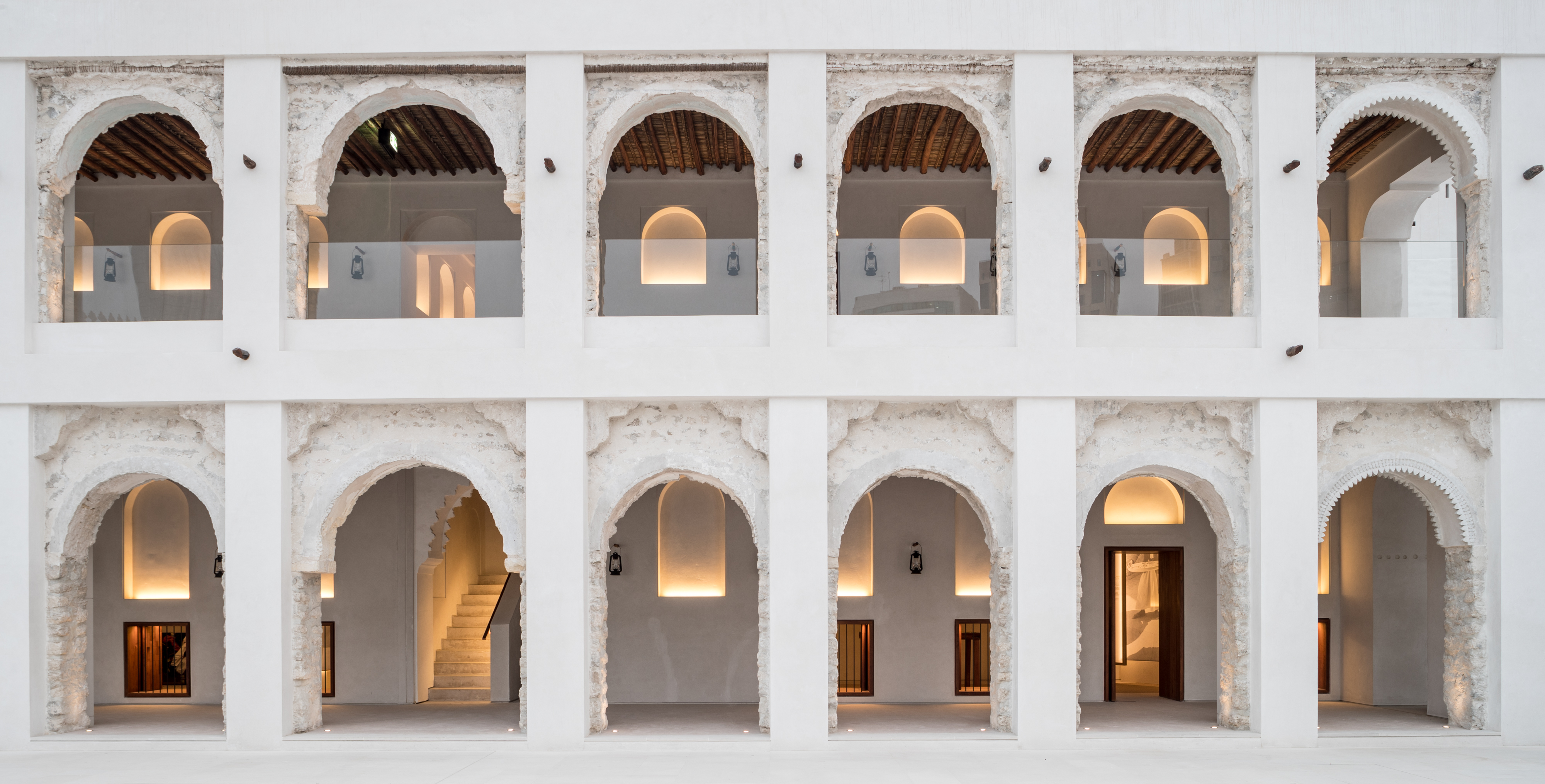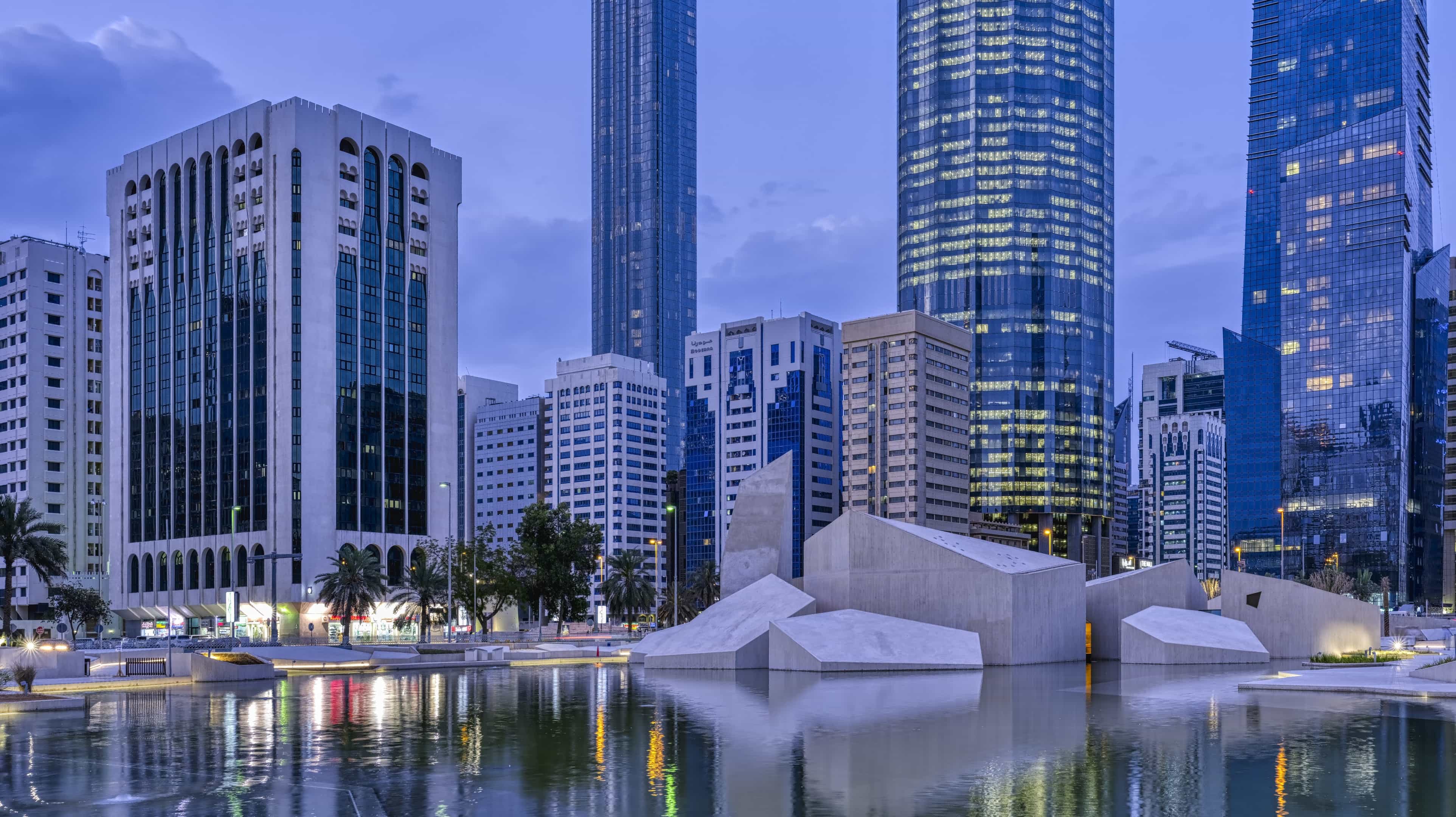See All
Heritage, art and culture across the Emirate
Culture lovers will be in their element in Abu Dhabi with this three-day itinerary that soaks up the heritage, art and culture of the UAE capital.
Start at Sheikh Zayed Grand Mosque, one of the world’s largest mosques. Next, discover Wahat Al Karama, a permanent tribute to the UAE's brave soldiers and other Emiratis recognised as martyrs in the country. The final stop of day one is Heritage Village, a family-friendly spot in which to experience traditional aspects of the desert way of life.
Start day two at Al Ain Oasis, with its still-operational traditional falaj (ancient irrigation system) and meandering pathways shaded beneath 147,000 date palms and other fruit trees. Al Jahili Fort, built in the 1890s, is next. Qasr Al Muwaiji is the final feature of the day, with this historic fort playing a major role in the history of the UAE for over a century.
On day three, explore picturesque Qasr Al Hosn, which stands as a narrator of Abu Dhabi’s history. Manarat Al Saadiyat is the second feature of day three, encouraging visitors to channel creativity. End your tour at Louvre Abu Dhabi, the first universal museum in the Arab World.
Highlights
Highlights
Day 1 highlights
Start your tour at the majestic Sheikh Zayed Grand Mosque before heading to the touching Wahat Al Karama tribute and, finally, the family-friendly Heritage Village.
Wahat Al Karama
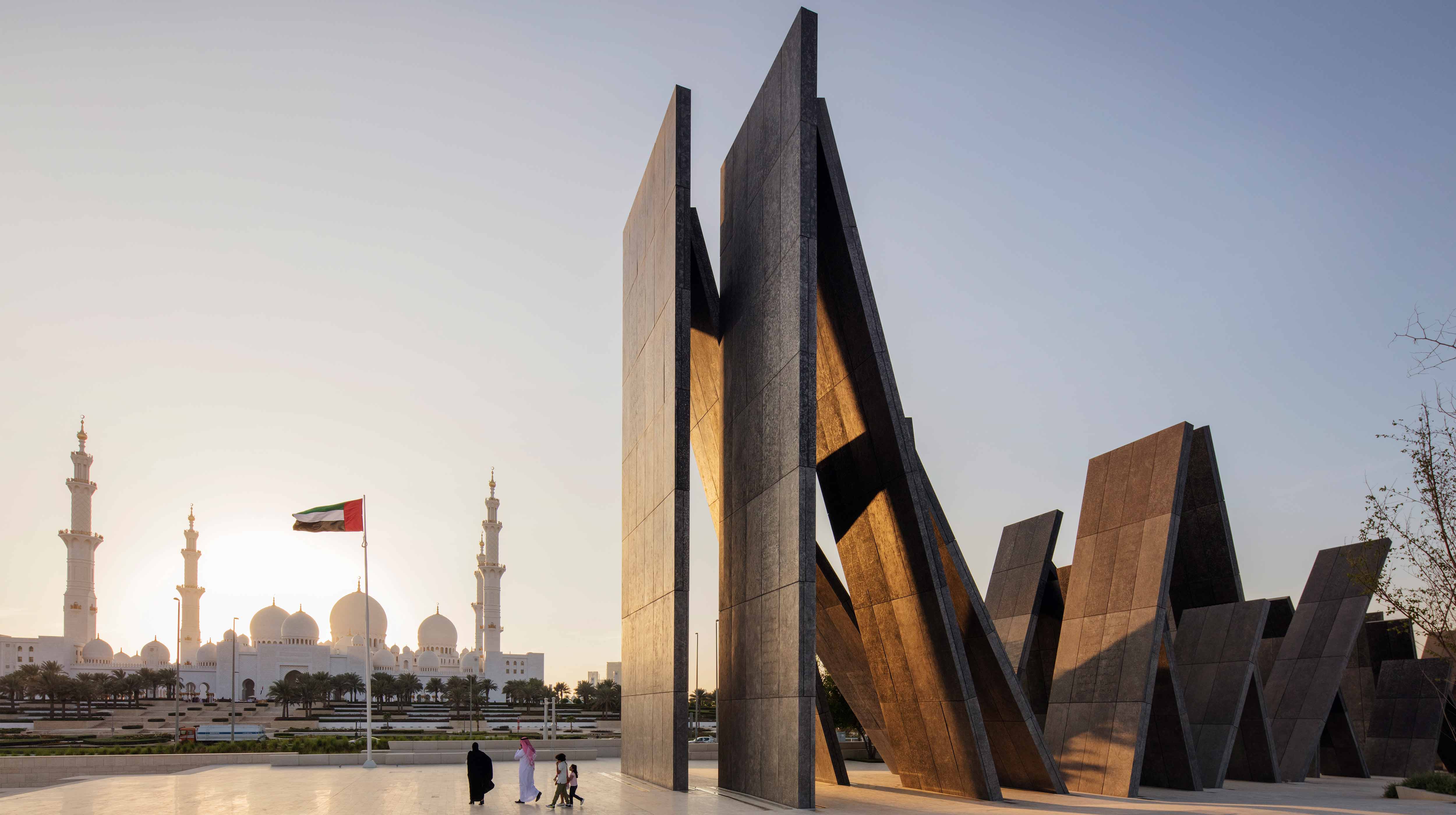
Stop 2
Sheikh Rashid Bin Saeed Street, Abu Dhabi
Recommended Time: 1 hour
Spanning 46,000 square metres and located directly opposite Abu Dhabi's world-famous Sheikh Zayed Grand Mosque, Wahat Al Karama is a timeless tribute that honours the Emirati martyrs who sacrificed their lives in service of their country. Wahat Al Karama is home to a permanent memorial commemorating the United Arab Emirates' heroes, including soldiers, police, diplomats and civilians, since 1971.
Following an intensive construction programme, Wahat Al Karama was officially inaugurated on Commemoration Day in 2016. The Memorial, designed by British artist Idris Khan, is the centerpiece. An imposing public art structure made up of 31 massive leaning tablets clad in aluminium, the symbolism behind the Memorial is clear: each tablet leans against the other, portraying the unity, solidarity and mutual support that bind the leadership of the UAE with its citizens, residents and the servicemen and women who protect them. If you look closely, you'll notice poems and quotations engraved into the tablets' surfaces in simple script, with the long spine at the base of the Memorial bearing the Armed Forces' pledge of allegiance. Visitors can witness a daily Honour Guard march at the Memorial before sunset.
Heritage Village
Stop 3
near Marina Mall, Abu Dhabi Corniche Breakwater
Recommended Time: 2 hours
Meet Abu Dhabi’s Heritage Village, a family-friendly spot to experience the traditional way of life in the desert. The village is an immersive time capsule, with an old-world souk (market), mosque and camp modelled on life in pre-modern UAE.
Located on the Marina Mall Island close to the city centre, the traditional oasis village offers a glimpse at Abu Dhabi’s past. Here you can shop, discover artefacts and watch artisans make pottery, blow glass and weave fabric on a loom.
Sheikh Zayed Grand Mosque
Sheikh Rashid Bin Saeed Street, Abu Dhabi
Recommended Time: 1 hours
When you enter Abu Dhabi's Sheikh Zayed Grand Mosque, you will understand why it is such a special place. Here, people from all walks of life come together to take in the architecture's beauty and gain a deeper understanding of religion and culture in the United Arab Emirates. The mosque is one of the world's largest and was the vision of Sheikh Zayed bin Sultan Al Nahyan - the Founding Father of the UAE. He envisaged the creation of a welcoming and cultural haven that inspires people from all backgrounds.
Even the construction was a cultural collaboration. The grand structure was designed and built by skilled teams from all over the world, including 1,300 Iranian artisans who hand-knotted the main prayer hall's carpet - the world's largest.
On your journey through the marbled halls, you'll see one-of-a-kind treasures, including gold-plated Swarovski chandeliers, the courtyard's vast marble mosaic artwork and reflective pools that mirror some of the many amethyst-and-jasper-embedded columns. When you're outside, look up to see the mosque's four stunning minarets that proudly stand at 106 metres.
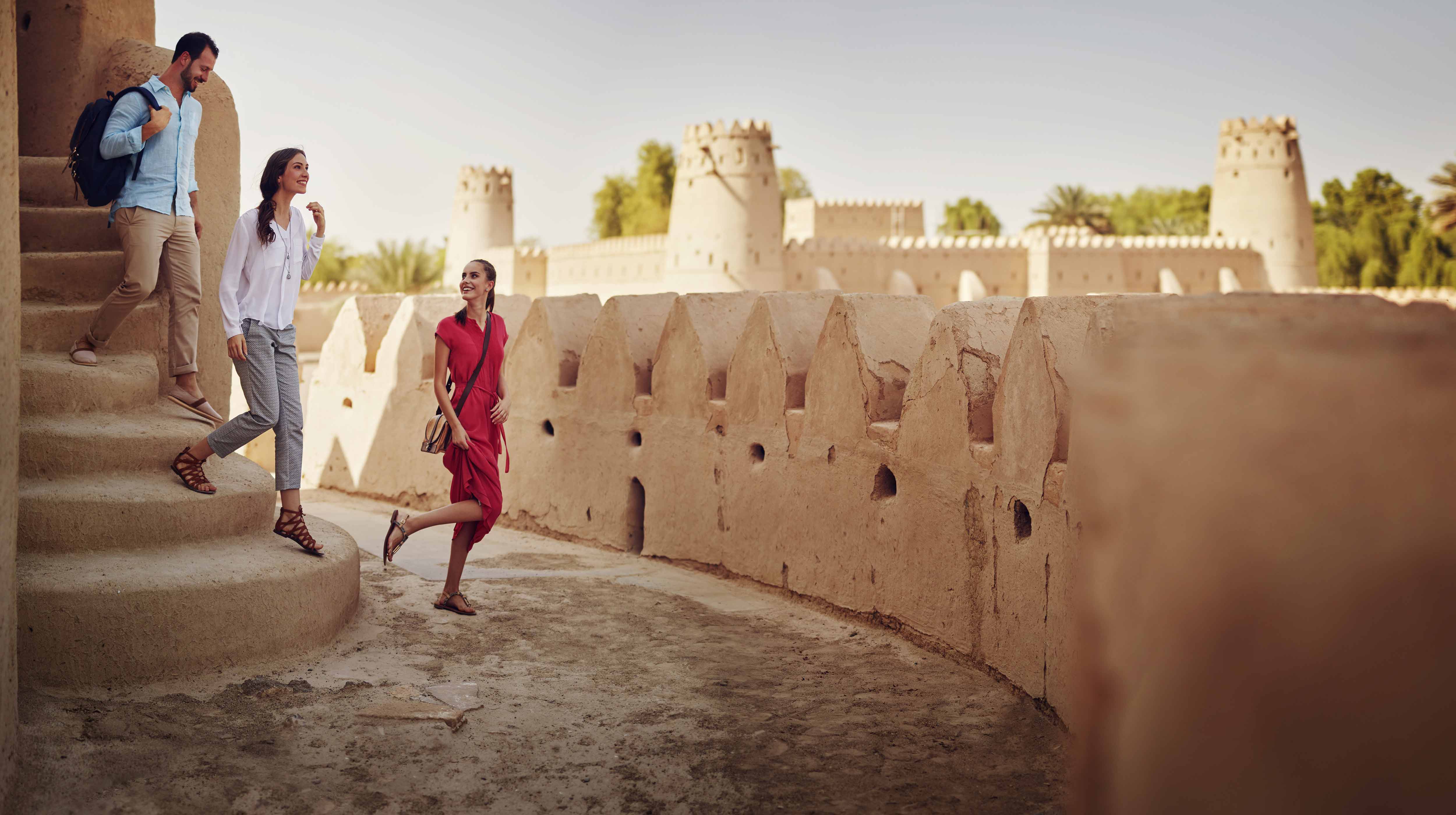
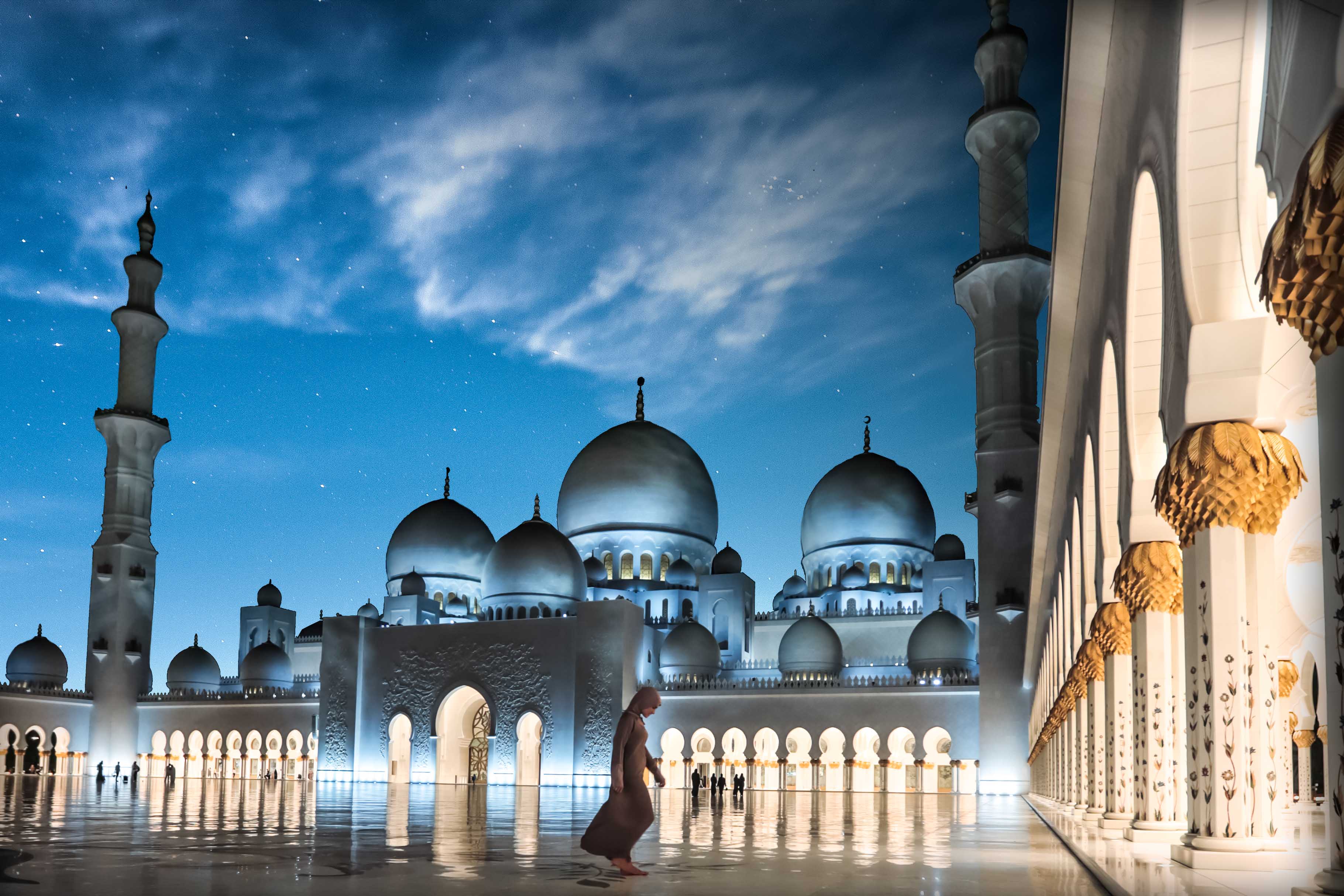
Day 2 highlights
Immerse yourself in history at the lush 4,000-year-old Al Ain Oasis before exploring the picturesque and historic Al Jahili Fort and Qasr Al Muwaiji fort, both of which offer great photo opportunities.
Al Jahili Fort

Stop 2
Mohammed Bin Khalifa Street, Al Ain
Recommended Time: 2 hours
Since opening its gates in 2008, Al Jahili Fort – set about an hour and a half away from Abu Dhabi in the lush garden city of Al Ain – has been a focal point of activities associated with the philosophy, culture and heritage of Abu Dhabi. Al Jahili is one of the largest forts in the UAE, built in the 1890s on the orders of Sheikh Zayed bin Khalifa Al Nahyan, also known as Zayed the First, as the home to members of the ruling Al Nahyan family.
Built of sun-dried mud brick, early restoration work was done on the fort in 1985, followed by a major rehabilitation project by the Department of Culture and Tourism - Abu Dhabi between 2007 and 2008. Surrounded by a lush park, the enchanting fort has received the prestigious Terra Award for Internal Design and Layout in 2016.
Qasr Al Muwaiji
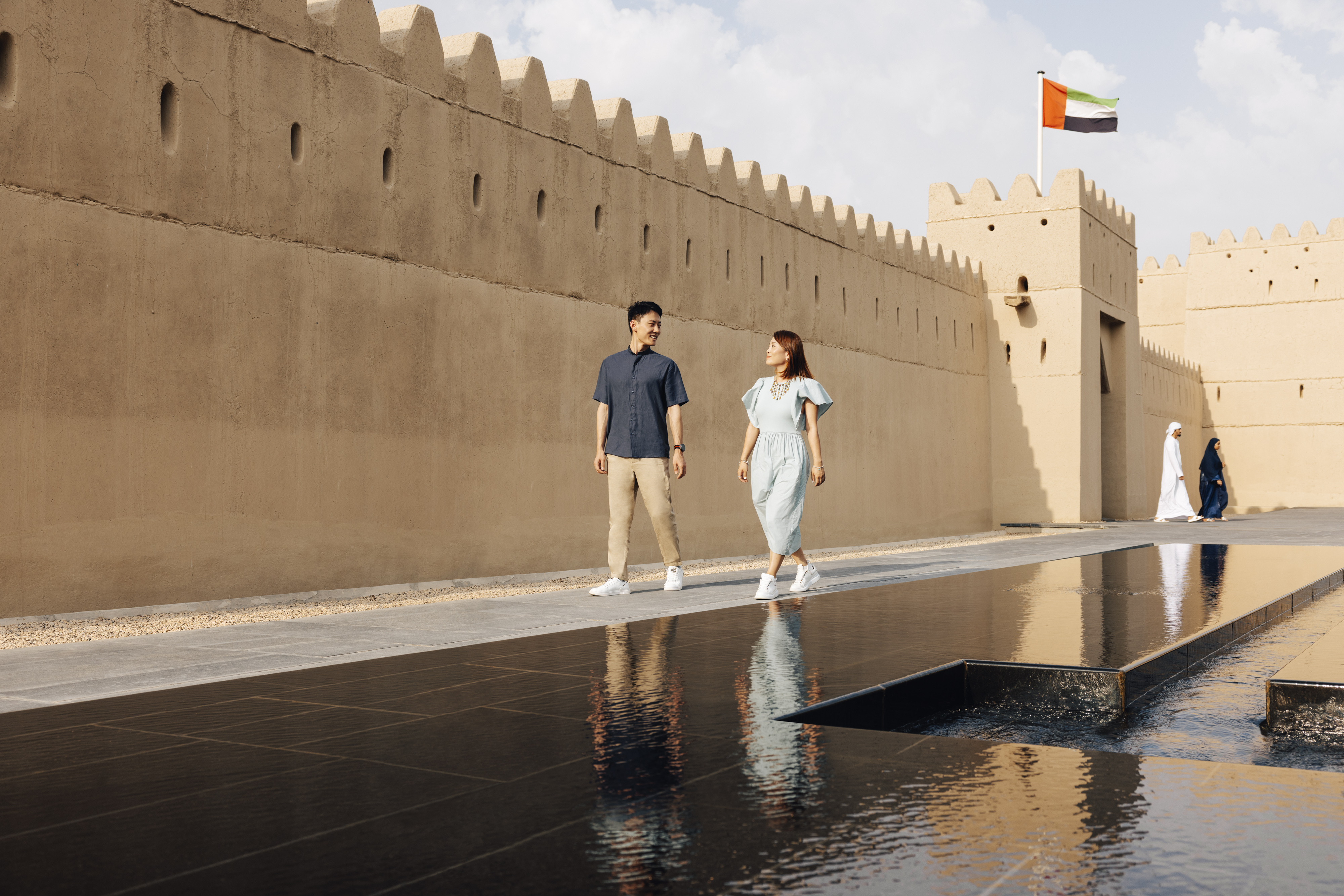
Stop 3
Khalifa Bin Zayed The First Street, Abu Dhabi
Recommended Time: 2 hours
There is an old saying that 'walls have ears'. Imagine what stories the walls of Qasr Al Muwaiji would tell, if they could, from more than 100 years ago. Add this historical stop to your itinerary for a deeper insight into the UAE's intriguing past. Situated in Al Ain, a lush garden city just an hour and a half away from Abu Dhabi, you will be amazed as you enter this simple yet striking structure at how the country has evolved from its humble beginnings.
Al Ain Oasis
Al Mutawaa, Al Ain
Recommended Time: 1 hour
With its still-operational traditional falaj (ancient irrigation system) and meandering pathways shaded beneath a thick canopy of over 147,000 date palms and other fruit trees, Al Ain Oasis is the perfect place to bring family or friends to see what agriculture in this region has looked like for millennia.
Covering 1,200 hectares, this lush oasis provides a unique insight into the region's inhabitants who began taming the desert 4,000 years ago. Located in the centre of Al Ain, Abu Dhabi's garden city and heritage heartland situated about a one-and-a-half-hour's drive away from the capital, this is the largest of Al Ain's oases. Farmers tend to thousands of date palms of 100 different varieties, as well as fodder crops and fruit trees, such as mango, orange, banana, fig and jujube (known locally as sidr). Individual plots and working farms are separated from each other by historic boundary walls.
The water supplying the lush oasis comes from both wells and the ancient falaj system that taps distant underground or mountain aquifers and then delivers the water, sometimes over many kilometres, to farms via a system of ground-level and below-ground aqueducts. Al Ain Oasis has plenty of working examples of the falaj that have been used for centuries. There are two main falaj systems serving the oasis: Al Aini and Dawood. They provide water to two separate parts of the oasis and both come from the southeast, the direction in which the Hajar Mountains and the nearby Jebel Hafit mountain lie.Once inside the oasis, water is distributed via an intricate network of channels. Distribution is strictly enforced and implemented by blocking channels in a manner that directs water to the required areas only.
Al Ain Oasis has been a UNESCO World Heritage Site since 2011, but only recently, with the construction of an educational Eco-Centre and the addition of an extensive system of shaded pathways, was it opened to the public.Through a series of immersive interactive exhibits, the Eco-Centre highlights the measures being taken to preserve the delicate oasis ecosystem and celebrates the invaluable contribution that Al Ain's oasis farmers have made to agriculture through their traditional farming methods.
The UN's Food and Agriculture Organization recognises all of Al Ain's oases for their importance as repositories of genetic resources, biodiversity and cultural heritage.
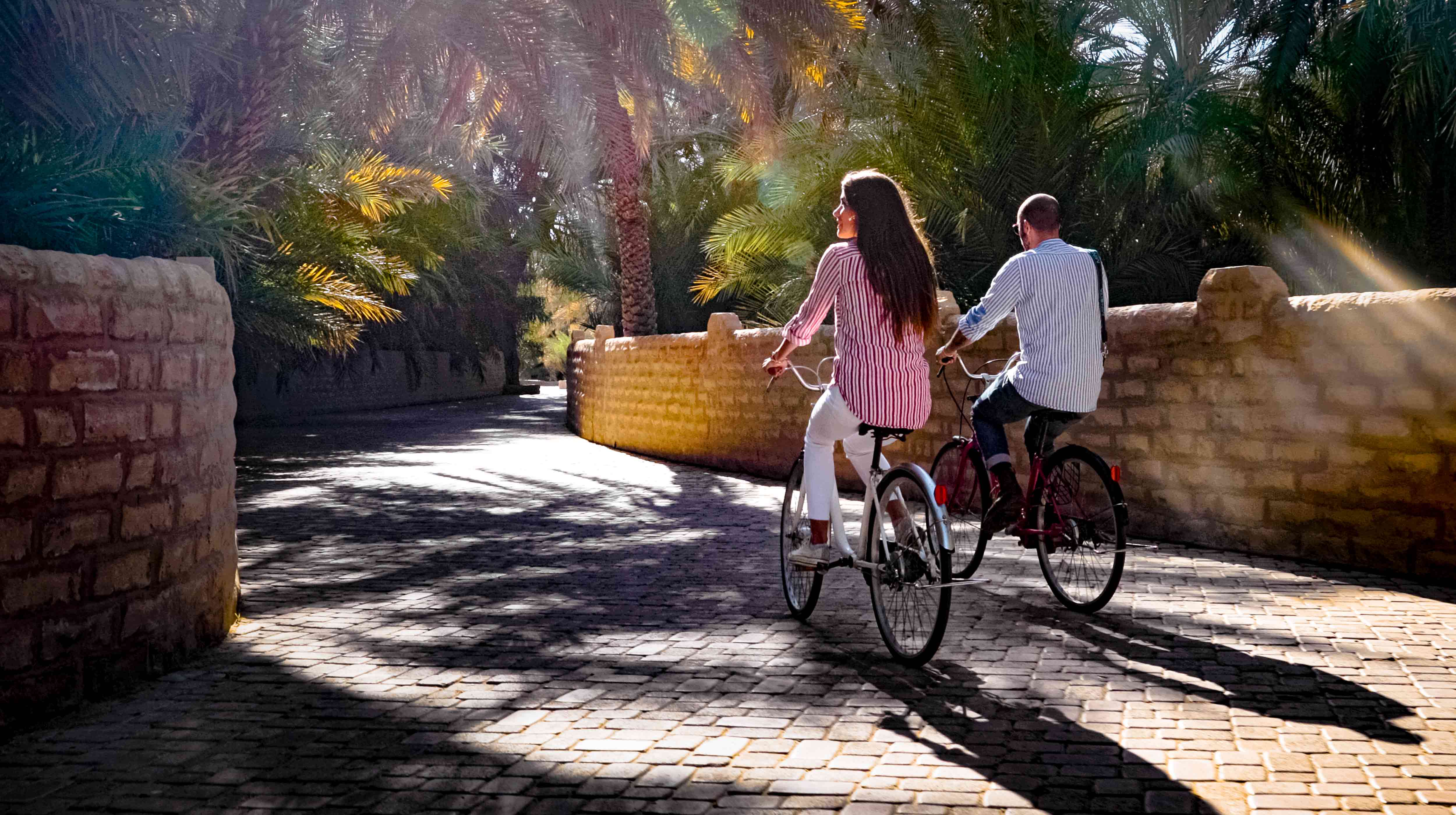
Day 3 highlights
Explore the picturesque and historic Qasr Al Hosn structure, then immerse yourself in arts and culture at Manarat Al Saadiyat, before viewing priceless pieces at the breathtaking Louvre Abu Dhabi.
Manarat Al Saadiyat
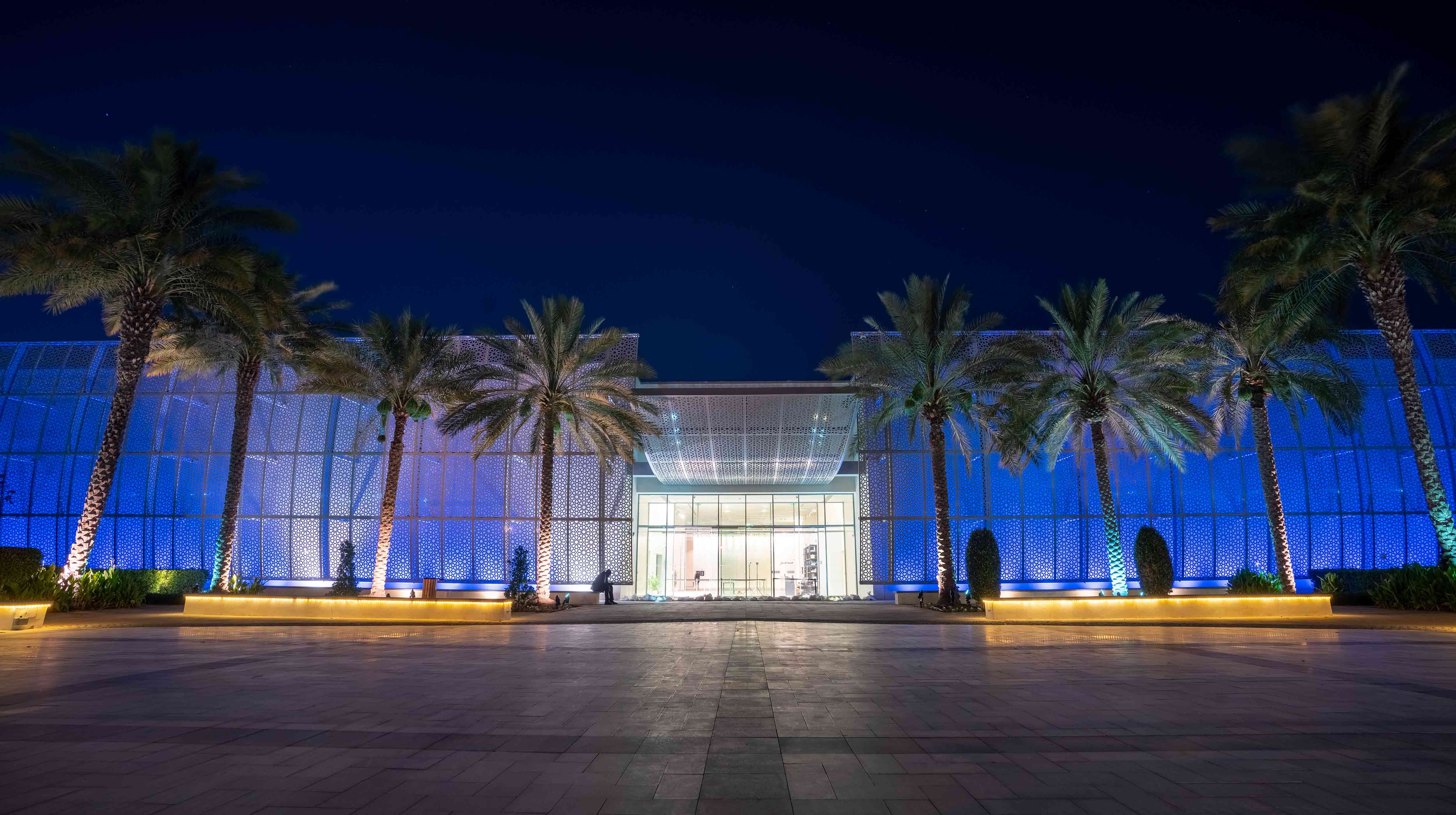
Stop 2
Saadiyat Island, Abu Dhabi
Recommended Time: 2 hours
Saadiyat Island’s art, cultural activity and community events centre, Manarat Al Saadiyat brings Saadiyat's vision to life, encouraging visitors to come together and share, experiment, create their own art, discover exhibitions, exchange ideas, enjoy sumptuous food, or listen to talks.
Meaning 'a place of enlightenment' in Arabic, Manarat Al Saadiyat is home to the annual Abu Dhabi Art fair, as well as an outdoor events terrace, café and brasserie, three galleries for temporary exhibits, a photography studio, an art studio, 250-seat auditorium and gift shop.
Louvre Abu Dhabi

Stop 3
Saadiyat Island, Abu Dhabi
Recommended Time: 2-3 hours
<p>Step inside the iconic Louvre Abu Dhabi, the first universal museum in the Arab World, translating and fostering the spirit of openness between cultures. As one of the premier cultural institutions in the heart of the Saadiyat Cultural District on <a href="https://visitabudhabi.ae/en/where-to-go/islands/saadiyat-island" target="_blank" rel="noopener noreferrer">Saadiyat Island</a>, this art lovers’ dream displays works of historical, cultural and sociological significance from ancient times to the contemporary era.</p>
<p>From the moment this iconic museum opened its doors in Abu Dhabi, the Abu Dhabi art scene elevated to a global scale, implanting a strong sense of pride in locals and residents alike.</p>
Qasr Al Hosn
Al Hosn, Abu Dhabi
Recommended Time: 1 hour
In a city like Abu Dhabi, where things are constantly evolving, there are some parts where time almost stands still. Qasr Al Hosn is one of them. The city's oldest stone building is a commanding figure surrounded by the emirate's skyline - a beautiful contrast between old and new.
Qasr Al Hosn in Abu Dhabi was built in the 1790s and was once home to the ruling family. The building also housed the National Consultative Council, founded by the late Sheikh Zayed Bin Sultan Al Nahyan, Founder of the UAE. Transformed into a museum in 2018 after a decade's worth of intensive conservation and very delicate restorative work, walking into the Al Hosn fort is like stepping into a time capsule. Qasr Al Hosn is located on Sheikh Rasid Bin Saaed Al Maktoum Street, roughly 30 minutes from Zayed International Airport.
